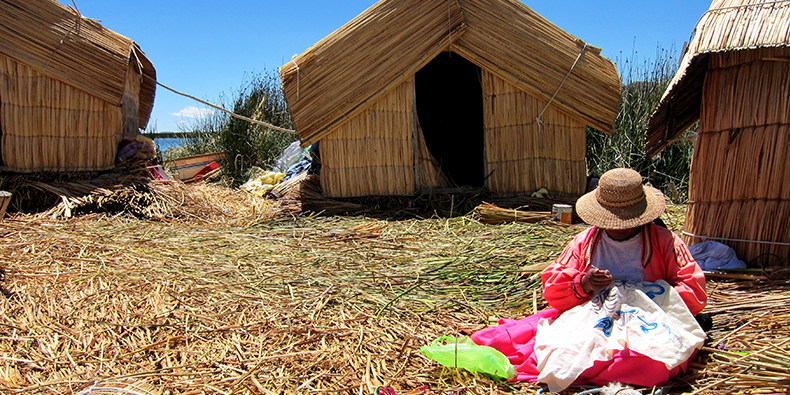Get to know one of the most fascinating living cultures in the Andes. Dive into an experience full of ancient traditions and meet the Uros people.

The Uros are a fascinating and unique ethnic group in the world. They are able to build their own islands by taking advantage of a type of plant that grows in Lake Titicaca, called totora. In order for you to understand this culture, here are some amazing things you need to know about them to make you understand why this community is so important.
The Uros call themselves “men of water” because there are very few cultures on the planet that live with such a close link to the aquatic environment. Their origins are lost in history, but some historians point out that they date back to a time before the Incas and that it was precisely the advance of this empire that prompted them to build on water, something that allowed them greater security and easy access to their main resource: fishing.
Currently, the Uros ethnic group is considered extinct, although some Aymaras took up this particular way of life, it is them that can be visited today.

The answer is simple, they use a plant called ‘totora’. This reed has a high buoyancy due to its environmental conditions (it grows on the banks of the Titicaca). The base, in contact with water, ends up rotting and these gases contribute to the floating structure. These organic islands, up to three meters thick, need constant care in renewing dry braided plant layers to maintain their integrity.

Three to ten families live on each island, depending on size. These small communities support each other with a deep sense of brotherhood and solidarity. One could say that they form one single island family.
For convenient reasons, the schools, places of worship, and other common premises are built on a central island to which the rest of the inhabitants of the archipelago go. It’s worth mentioning, the Uros are very good sailors.
Among the most common activities of the Uros, is the weaving and treatment of totora reeds (not only the islands are made of this material, but also their houses and their traditional boats). Also, fishing (especially pejerrey and Karachi) or hunting birds are some of the activities necessary for trade and subsistence.

Although the Uros people preserve a strong cultural identity, for almost a century they no longer speak their original language, Uro, which belonged to the Uru-Chipaya (also called Uruquilla) linguistic family. Only the Chipaya language is spoken today in Bolivian territory.
Currently, the Uros people’s predominant mother tongue is Aimara, followed by Quechua. Many Uros also speak Spanish as their first or second language. In an effort to recover and strengthen their identity traits, there are initiatives to recover the knowledge of their ancient extinct language, with the support of the Ministry of Culture.

The archipelago where the Uros live is less than 6 kilometers away from the port of Puno, on Lake Titicaca (3,810 meters above sea level). Although the number of islands varies, as they are made of organic material and some are abandoned and others are newly created, there are currently approximately fifty. Most of the islands are within the boundaries of the Lake Titicaca National Reserve.
If you are looking to go to the islands, the best way will be to go on a tour. There are several tour operators that take hundreds of people each day to the islands. Departures are daily during the morning and afternoon. Here you can get further information about the tour to the Uros islands.
